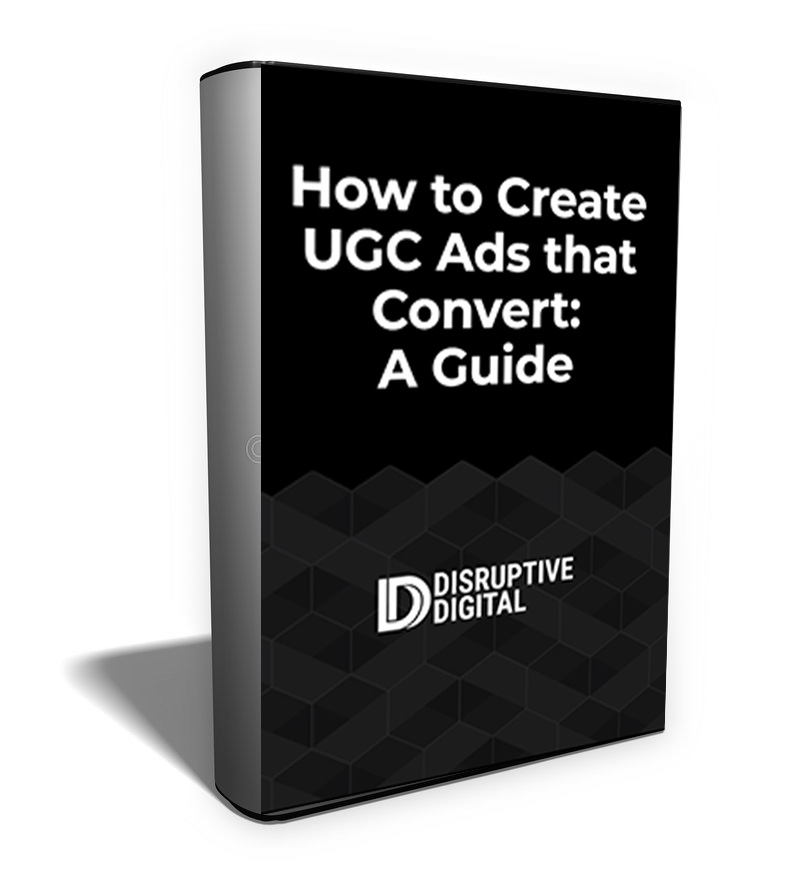Attribution isn’t a new concept, but it’s a hot topic right now, especially in the Facebook advertising world.
Let’s back up a quick second. We know that iOS 14 was released in 2021, and people updated their iPhones to the newer operating service. Simple, right? However, these changes showed massive implications on advertisers’ ability to market, track, and understand data from potential and current customers due to opt-outs from tracking from iOS (Apple) devices.
Changes to that opted-out user data include shorter attribution windows, eight standard, and custom optimization events, no demographic data in reporting breakdowns, and likely smaller retargeting audiences due to only the highest prioritized events being noted.
What does this mean? It means that in-platform reporting in Facebook Ads Manager isn’t accurate or thorough.
Enter: third-party data solutions.
While Northbeam and TripleWhale are new attribution tools, they are hardly the first to market. There have been other software tools in the multi-touch attribution game for years now — including Visual IQ (2006) and DTC-focused RockerBox (2013).
But before we go any further, let’s first strip the concept of attribution tools down to its barebones.

What are Attribution Tools?
The primary goal of attribution tools (or MTA tools) is to provide marketers with an out-of-the-box or semi-customized attribution tracking & modeling to help marketers understand how much credit should be given to each marketing touchpoint. Put differently, attribution tools give you an insight scoop into your customers’ buyer’s journey to understand what’s working and what’s not.
If you think about marketing attribution as a basketball game, most marketers tend to focus on the person who scored. As in, the channel that directly drove conversions. But this means you’ll be missing out on a lot of data. It takes an average of 5 to 7 touchpoints before a conversion can materialize—just like there are multiple players on each team who assist in a play.
So an attribution tool is critical in giving you a complete picture of all your channels that lead your team to victory.

Attribution Tools vs. In-Platform Reporting: What are the Key Differences?
Using our basketball analogy above, below are two key differences between attribution tools and in-platform reporting.
1. Key KPIs
In-platform reporting makes your conversions the MVP star player.
Attribution tools make your advertising ROI the MVP. This is ultimately what matters for your marketing efforts, and partly why most Facebook Ad Manager users invest in a separate attribution solution.
2. Customer Journeys
In-platform reporting shows your top conversion paths across your Facebook ad campaigns. However, it doesn’t provide user-level data nor ROI, ROAS, or LTV tracking. So you don’t know which paths lead to the highest ROI.
Most attribution tools show each touchpoint that leads to a conversion and let you drill down into individual user paths. So, in addition to aggregate conversion paths, you’ll know who’s on your team roster and the individual stories that led them to your team.
In a nutshell: Attribution tools are a huge upgrade from in-platform reporting as they can show your ROI, the effectiveness of your channels, and the full view of your customer journey.
How Attribution Has Changed Post-ATT
Let’s be honest here.
Attribution is broken — even before the dreaded iOS 14 update. As a reminder, this update prompts and allows users to opt-out of ad tracking.
With more than 50% of smartphone dominance in the US alone and 27.6% of the global market share, it’s no big surprise that the updates led to major changes in ecommerce and the decline in accuracy of tracking in key paid media platforms. Most importantly, Facebook.
Here’s what changed when it comes to Facebook, in short.
- Data: Pre-ATT, Facebook was allowed and was able to connect users’ in-app add views to off-app activity, such as visits to site. Today, however, users are automatically opted out of this.
- Conversion tracking: Even if someone opts in, advertisers are limited to tracking just 8 events on the Facebook pixel (standard and custom). Prior to the update, there wasn’t a limit on the number of events you could track. If the user opts out of sharing their data, you’ll now be limited to tracking just 1 conversion event.
- Attribution window: 28-day and 7-day view-through attribution windows are no longer supported. Before the update, you could track someone who viewed your ad but didn’t purchase until 2 weeks later. The new attribution settings are set to ‘7-day click’, meaning your ad will be optimized for users who are likely to convert within 7 days.

Now with the current iOS 15.4.1 update, you can be dead sure that relying purely on media platforms such as Facebook and Google Analytics for reporting attribution is a fool’s game.
Keeping these issues in mind, it’s clear that for advertisers to stay ahead of the curve, they need to leverage attribution tools like Triplewhale and Northbeam. In other words, they need these tools to help make sense of reporting in a post-ATT world.
Digging further, the first-party pixels of platforms like Northbeam and TripleWhale have tried to replace the biggest change to Facebook and other platforms’ reporting post-ATT: the shift from deterministic to probabilistic data.
Speaking of deterministic and probabilistic data, let’s take a quick detour and examine what these two concepts really mean.
Deterministic vs. Probabilistic Attribution: The Key Differences
By definition, deterministic attribution is an attribution technique that uses device IDs and other personally identifiable information to identify the same user across different devices. Because the device ID is used, the match is 100% accurate for attribution.
Probabilistic attribution, on the other hand, is based on probabilities, not ID or device matching. In other words, this form of attribution relies on machine learning and statistical modelling techniques to identify probable conversions across various marketing touchpoints.
Since probabilistic attribution relies on trying to match device data with a user database, this technique is typically less accurate and is used as a fallback when a deterministic identifier is unavailable.
In addition, the data collected for probabilistic attribution, such as the user’s IP address, changes much more frequently than a device identifier, which means that probabilistic attribution has a shorter attribution lookback period than deterministic attribution. Specifically, the accuracy of correctly identifying a device decays exponentially after 24 hours, so this is the typical cutoff period for the probabilistic attribution lookback window.
Building the Case for Attribution Tools Post-ATT
Prior to ATT, Facebook was really good at deterministic attribution and doing it at scale. With nearly 3 billion people using their real names on the platform, Facebook was (and still is) the de facto identity layer of the internet.
This gave Facebook a competitive advantage in reporting because the data wasn’t only accurate but thorough. If Facebook drove 100 conversions, their level of deterministic data likely matched on 95+ of those conversions. Even if a cookie failed to match a user, the platform’s ability to match someone’s email, name, or some other PII data was high. It also didn’t matter how few conversions you drove.
If you only drove 10 conversions, Facebook could still confidently determine 9 of those conversions via deterministic data.
However, post-ATT, deterministic data has been significantly hampered and practically rendered unusable. As a result, reporting has moved to probabilistic-modeled attribution for all ad platforms.
This means the data shared with ad platforms is less accurate and less thorough. And the less data you have as an advertiser, the worse your modeling is.
For example, in this new world, the advertiser with 100 conversions will likely see more accurate modeling than the advertiser with only 10 conversions.
(It likely also doesn’t help that Facebook is using a mix of deterministic and probabilistic data when they display reporting, further confusing advertisers on their in-platform performance.)
Now, what will an advertiser that’s relied on deterministic data for so long do, especially those with less signal? Find an alternative. This is where attribution tools like TripleWhale and Northbeam realistically come in.
Newer tools like TripleWhale and Northbeam emphasize deterministic data with a view of helping advertisers bring back the good old days of Facebook reporting. No wonder they’ve been largely marketed as post-ATT solutions.
Unlike solutions like Google Analytics, these new tools have pixels that don’t only rely on cookie-based data to help with reporting, but also integrates with your CRM/POS system directly. This integration essentially reconnects your PII data with your ad for insights, similar to what Facebook was able to do pre-ATT with a similar level of accuracy (albeit with less thoroughness). That deterministic data helps with solving some of the teething problems that have emerged post-ATT.
For example, these tools can be very helpful in understanding how a creative is performing without waiting 3 days for Facebook to report back performance. Or to understand the potential path a customer takes before buying.
To further understand how beneficial post-ATT attribution tools truly are, let’s take a look at their capabilities further.

TripleWhale and NorthBeam’s Other Attribution Capabilities
Here are some of the metrics you can see with the TripleWhale and NorthBeam pixels:
1. Your ROAS Data
You can access your ROAS by clicking on the ad platform you want to track. Once you spot the campaigns related to that platform, you can identify the platform’s ROAS and TripleWhale/Northbeam ROAS tied to it. You can even compare different attribution models like First Click vs. Last Click by clicking on the pixel’s icon.
Best of all, the platform allows you to drill down into any given campaign, ad set, or ad. From there, you can see the list of customers or orders that can be traced back to that ad. How cool is that?
To get more information regarding any particular customer’s journey, all you have to do is to click on their name, and their entire journey will be displayed in a popup, such as what ads they clicked on, what pages they visited, and what they purchased.
2. Channel Overlap
As you well know, the buyers’ journey will not always be linear. Sometimes customers would have engaged with different ad channels before making a purchase.
This is where a tool like Triplewhale’s Channel Overlap helps out by providing a visual display of the number of customers in multiple touchpoint journeys with the ability to toggle between overlapping different ad channels to guide in decision-making.
3. Live Order Attribution
Nothing is more exciting than seeing sales being made live.
Live Orders keeps you in the know by updating every time a new order is placed in your store where the customer has clicked through an ad at any time before making the purchase. (Tools like Google Analytics typically have a delay in how they report back.)
4. Other Useful Metrics
In addition, you can track tons of other data from the Triplewhale and Northbeam pixels by organizing them into the columns according to your preferences.
Some of the other metrics you can unearth include but are not limited to the following:
- AOV
- Conversion Value
- New Revenue
- CPA
These advanced metrics are available without any complex configuration required. TripleWhale even helps you to predict the future revenue of cohorts based on your data history, and you can segment each cohort by things like first product purchased, discount code, or other important metrics.
For those using the mobile app, Triple Whale is particularly helpful as it allows users to easily monitor their profit levels and gain real-time notifications when their profits or ROAS drops.
See, we’re not kidding when we say Triplewhale and Northbeam have marked a new era in attribution.
Attribution Tools are Indispensable in a Post-ATT Advertising World
Add it all together, and one indisputable takeaway emerges. Attribution tools are of incredible importance, especially if you have less signal to begin with and you’re looking to make sense of reporting in a post-ATT advertising world. Triplewhale and Northbeam, in particular, are cut out for accurate, thorough attribution and can help advertisers understand their performance on a more aggregate level.
However, it’s crucial to note that these tools are no silver bullets but merely another tool in your toolbox (see the sailing analogy in this Twitter thread I shared a while ago). If you don’t understand how they fit into your current measurement and their limitations, you might make potential errors in how you buy media moving forward.
Need help with leveraging attribution tools to drive conversions, sales, and ROI? Contact us today








